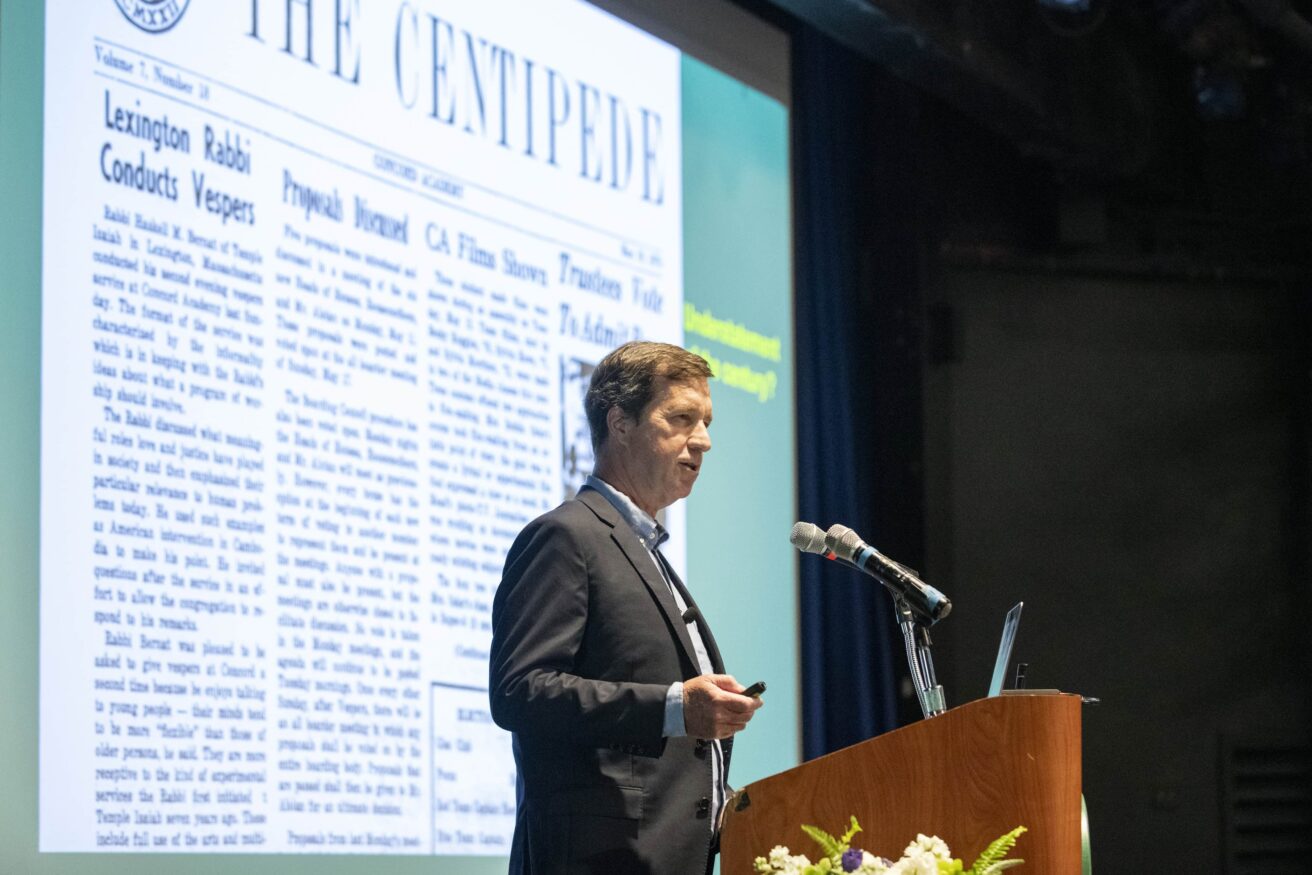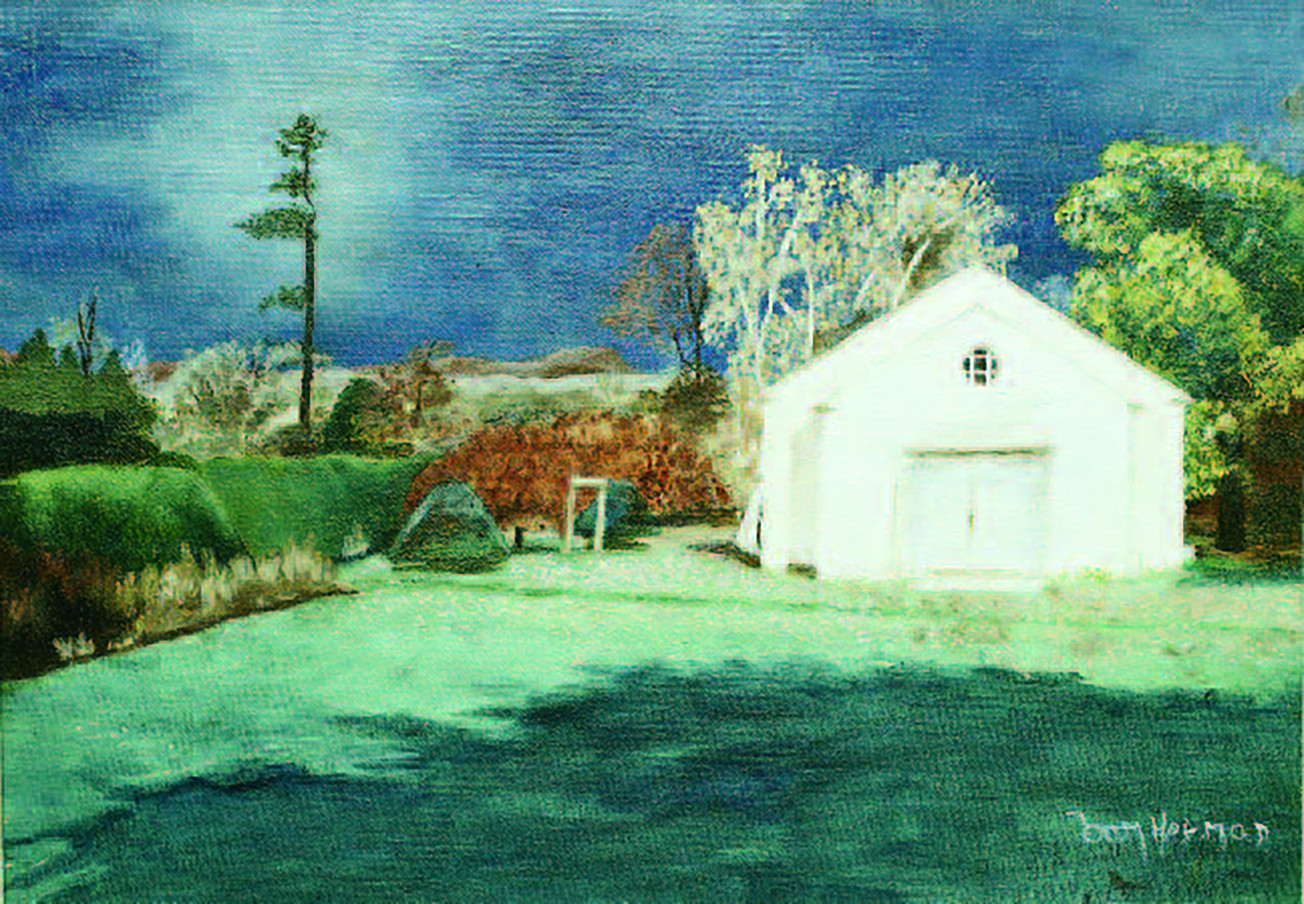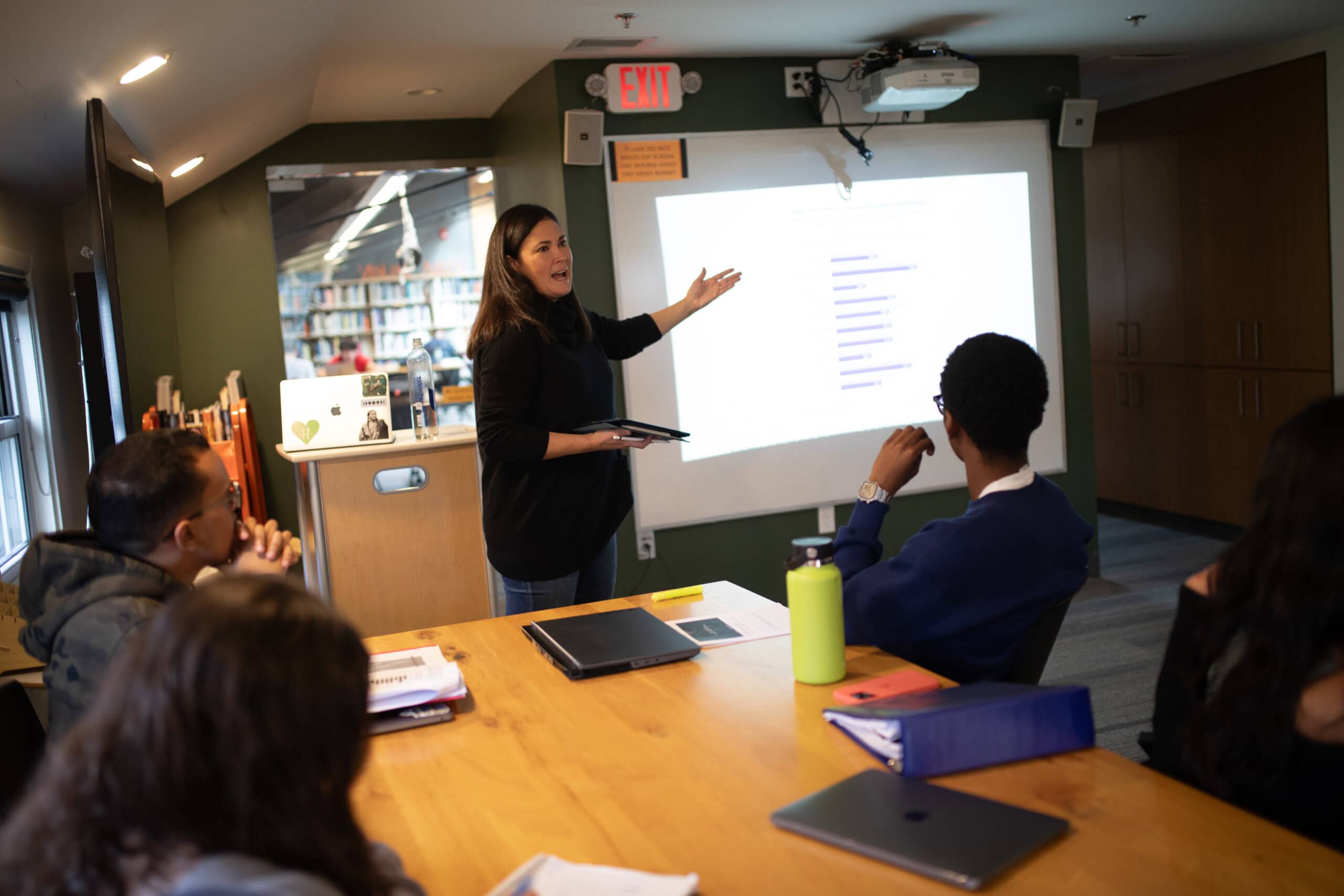CA Honors Journalist Richard Read ’75 with the 2024 Joan Shaw Herman Award

Richard Read ’75 had long admired recipients of Concord Academy’s annual Joan Shaw Herman Award for Distinguished Service. But he says he thought the award was meant for “do-gooders and activists.” That’s why, as a lifelong newsman, he was surprised to be selected as this year’s honoree—the first journalist to receive the award since the only prize bestowed by the school was established in 1976.
Yet in today’s polarized, fragmented, and global media landscape, he’s all too aware that small markets have become news deserts and media consumers can be hard-pressed to judge the credibility of sources. Journalistic ethics have never been more important.
“The fact that so many newspapers are going out of business is beyond alarming,” Read says. “It’s hard to watch, and it’s a threat to democracy.”
During Read’s 40-year newspaper career, he reported from all seven continents and more than 60 countries. He won two Pulitzer Prizes that speak to the impact a reporter can have: one for explaining Asia’s 1990s financial crisis by following a container of french fries from a Northwest farm to a Singapore McDonald’s, and the other for exposing abuses by U.S. immigration officials.
It was for his “dedication to responsible journalism and journalistic integrity” that Betsy Green ’91, chair of the selection committee, presented Read the award on May 10.
Speaking to CA students in the Performing Arts Center, Read shared how he got his start as a reporter when he was their age. CA’s student newspaper, The Centipede, was founded in 1962. When Read arrived, it had no faculty advisor. He showed a photo of a 1970 edition that announced, “Trustees Vote to Admit Boys”; the article was squeezed without fanfare into the far-right corner of the front page. Read called it “the understatement of the century” and said he and a cartoonist friend, George Perkins ’75, P’13, vowed to “stir up The Centipede in our generation.”
They first took as their model the Old Mole, a radical underground newspaper published in Cambridge, Mass., where they both lived. What they created, The Old Rabbit, was hand-drawn and handwritten, mimeographed for distribution, often lampooning The Centipede. After critiquing the school newspaper from the outside, he says, they signed onto the Centipede staff, determined to make it “a little more edgy.”
Read drew analogies between our current era and the late ’60s and early ’70s, a tumultuous time of war, protest, counterculture, and political upheaval. His generation’s heroes, he says, “spoke truth to power”: they included musicians Bob Dylan, Joan Baez, and Pete Seeger, and journalists Anthony Lewis P’76, Seymour Hersh, Bob Woodward, and Carl Bernstein.
To give today’s students a sense of the appeal of investigative journalism during his student days, Read played a clip from All the President’s Men, a film that dramatized how Woodward and Bernstein broke the story of the Watergate scandal that ended Richard Nixon’s presidency. “These were the kind of journalists we were trying to model ourselves on,” Read said.
He recounted how his friend David Duffy ’75 “landed a major scoop” for The Centipede that detailed financial mismanagement attributed to a school trustee, and resulting faculty layoffs. Duffy’s story, and an outspoken editorial written by Read, caused controversy on campus. “The headmaster was furious,” he said, but “to the school’s credit”—and with a quiet nudge of the administration by Lewis, a New York Times columnist—“they let us keep going.” Read praised “the way Concord prides itself on freedom of discussion and agreement to disagree.”
Read majored in English at Amherst College, and after graduating sent 100 letters to newspapers around the country; the effort earned him 40 rejections and three job offers. Portland, Ore., was the most attractive location, and working for The Oregonian became pivotal in his career.
He learned to “report fast and write faster” on an IBM Selectric typewriter, without the luxury of a delete button in the pre-computer age. In the heyday of regional newspapers, Read said, there were plenty of resources to send reporters on location in private jets. His first front-page story was about a massive explosion at a plywood mill. He also covered science and began doing investigative journalism, exposing a plea bargain that resulted in a minimal prison sentence for a man who fatally assaulted his girlfriend, a Black woman in a low-income neighborhood of Portland.
But Read had always dreamed of being a foreign correspondent.
He forged an unusual path to become one, securing a Henry Luce Foundation fellowship that sent 15 Americans abroad each year to work in their professions in Asia. In Bangkok, he wrote for The Nation, an English-language newspaper, took a crash course in Thai, and learned the basics of war reporting. Then he moved to Tokyo, where he freelanced until convincing The Oregonian to open a bureau.
As a Tokyo-based foreign correspondent, Rich reported from North Korea, the strangest place he’d ever been—a “country as a cult,” he called it—where he witnessed eerily synchronized mass performances by school children in honor of then-President Kim Il Sung, the “Great Leader.”
He also covered the war in Cambodia and chronicled the economic opening of Russia and Vietnam. His favorite interview was with the Dalai Lama at his home-in-exile in Dharmsala, India. His work with three other reporters investigating the U.S. immigration agency won The Oregonian the gold-medal Pulitzer Prize for Public Service, journalism’s highest honor.
Read finished his career as The Los Angeles Times bureau chief in Seattle, covering protests and riots there and in Portland, and the rise of the Proud Boys and other far-right organizations. During the pandemic, he broke the story of a superspreader event among choral singers that helped convince U.S. health officials that COVID-19 is transmitted through the air.
He retired in 2021 and continues as a freelance writer, also working on documentary films.
“I was really lucky,” he told CA students. “Somehow I discovered my passion early and stuck with it.” He advised aspiring journalists to stay out in the field and always have a half-dozen story ideas to develop.
When asked about stories that had taken an emotional toll on him, he said that reporting on natural disasters, such as the tsunamis he covered in Japan and the Indian Ocean, were the most wrenching assignments. Rather than trying to convey the “mass scale of destruction,” he said, he would focus on an individual family, getting to know them as best he could and “telling their story up close” so that readers could feel the human impact.
During his visit to CA, Read attended a senior chapel, an environmental science class, and a club meeting of The Centipede staff, with whom he reflected on the state of the media today. In their heyday, regional papers flourished, funded by advertising. When Craigslist came on the scene in the mid-90s, The Oregonian lost $6 million in annual classified-ad revenues. It was the beginning of the end. “We’re working in a business model that’s broken,” he told the student reporters.
But he cited reasons for hope at both ends of the spectrum—from global leader publications such as The New York Times and The Wall Street Journal, which have adapted most successfully to a digital format, and from hyper-local newspapers, where businesses still advertise alongside high school sports scores. He also pointed to promising new models in independent nonprofits such as ProPublica and The Marshall Project, which are funded primarily by foundations and private donors.
Even with the increasing adoption of artificial intelligence, he said he finds reason for optimism. For example, he appreciates AI as a tool for compiling information in seconds, such as graphs that previously required a laborious collaborative process with the newsroom art department.
Read doesn’t see journalists being replaced anytime soon: “We will always need a person on the ground out there, observing, interviewing, trying to get facts.”
Established in 1976 in honor of Joan Shaw Herman ’46, an artist and advocate for people with disabilities, the Joan Shaw Herman Award for Distinguished Service is the only prize Concord Academy bestows. It’s given not to a student but to an alum, and not in recognition of personal achievement but for service to others. The variety of volunteer and professional work of Joan Shaw Herman Award recipients testifies to the global impact of CA’s mission.




